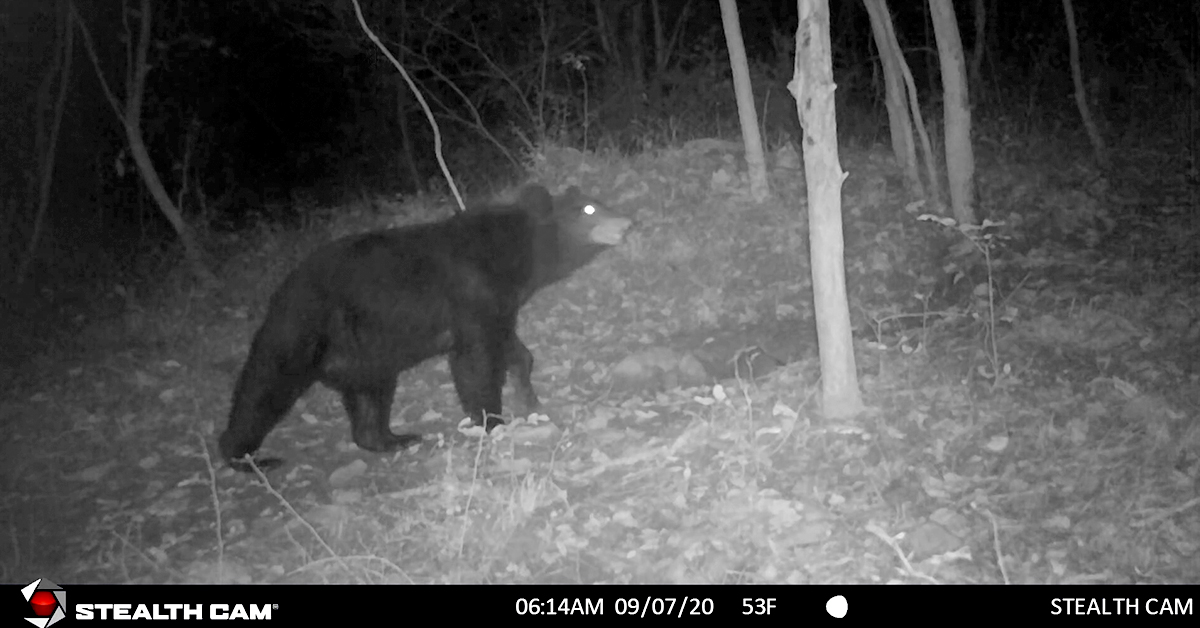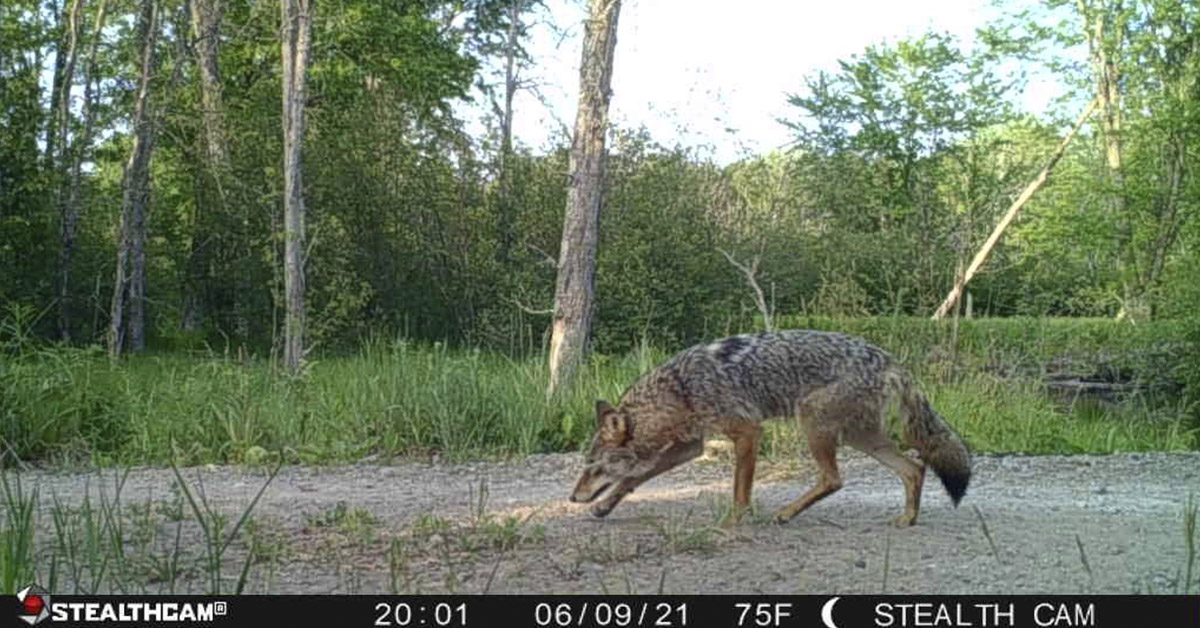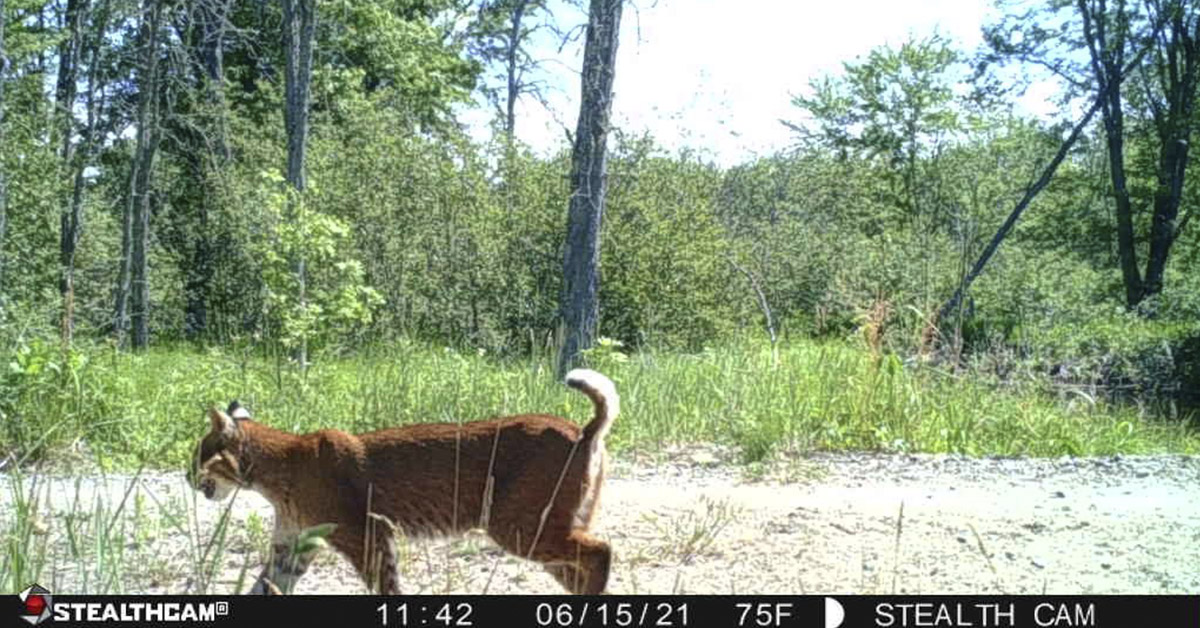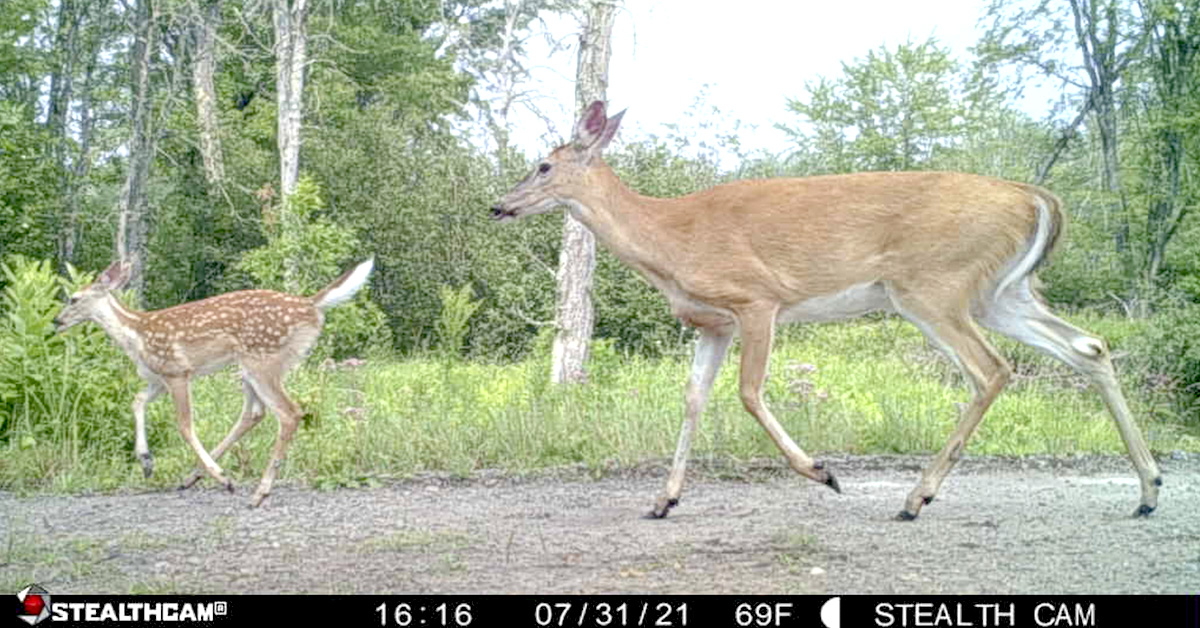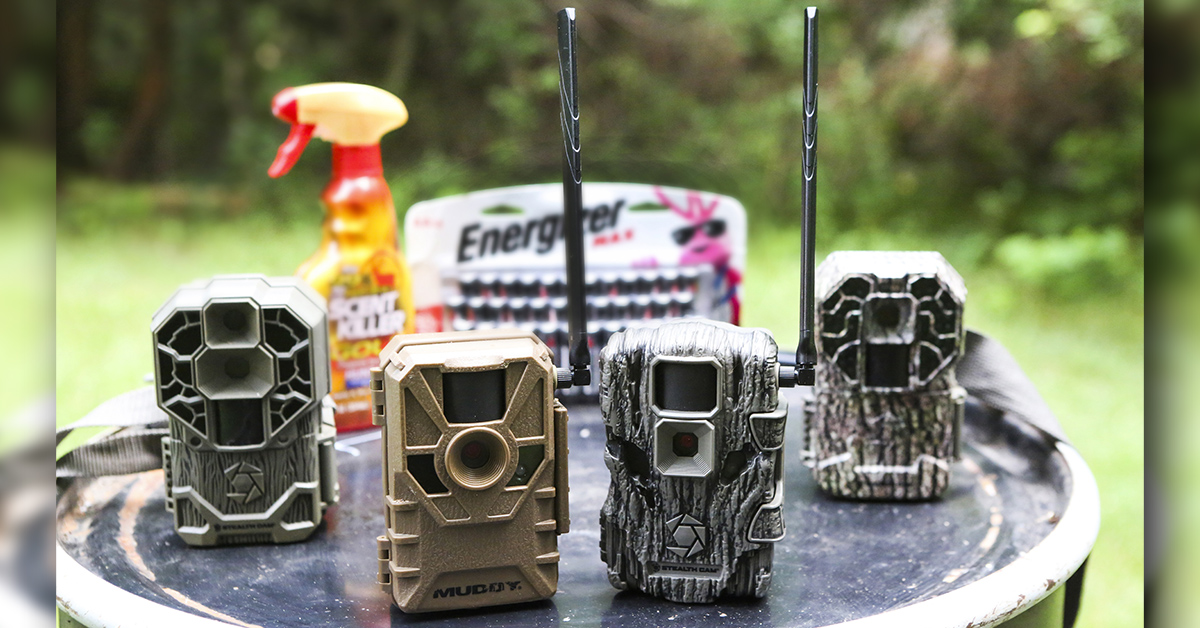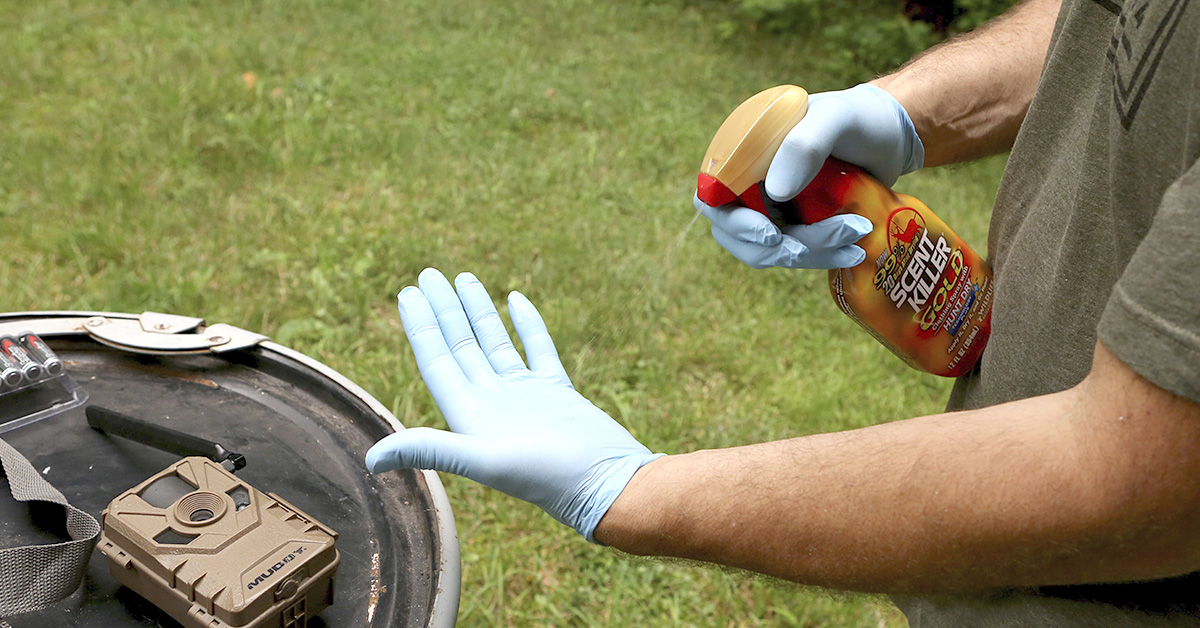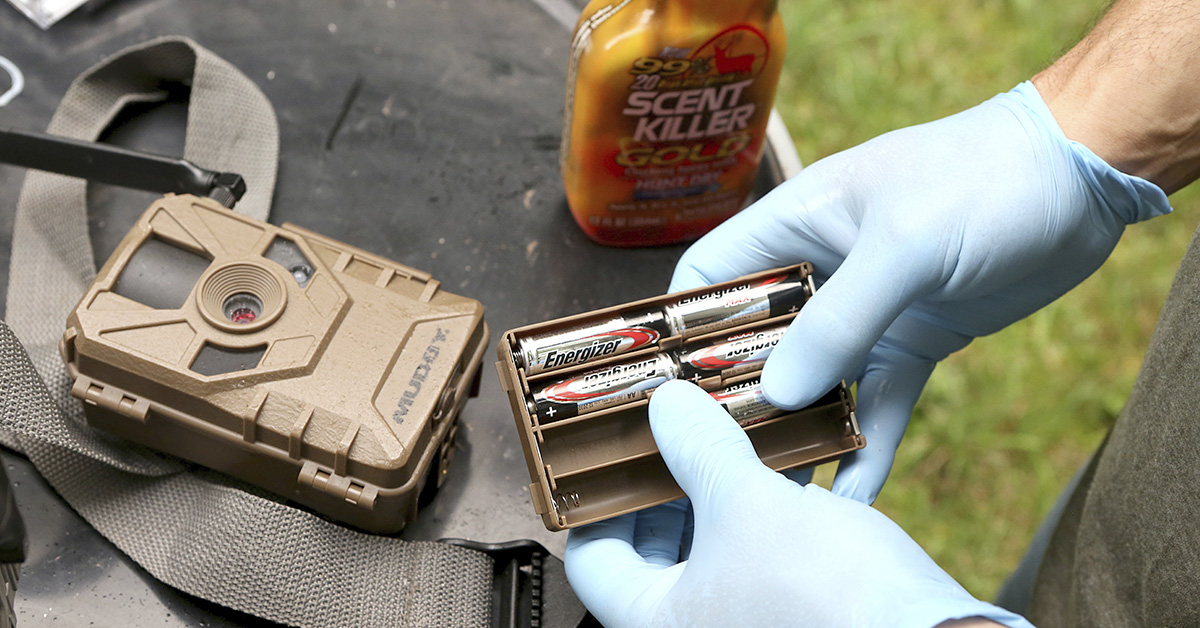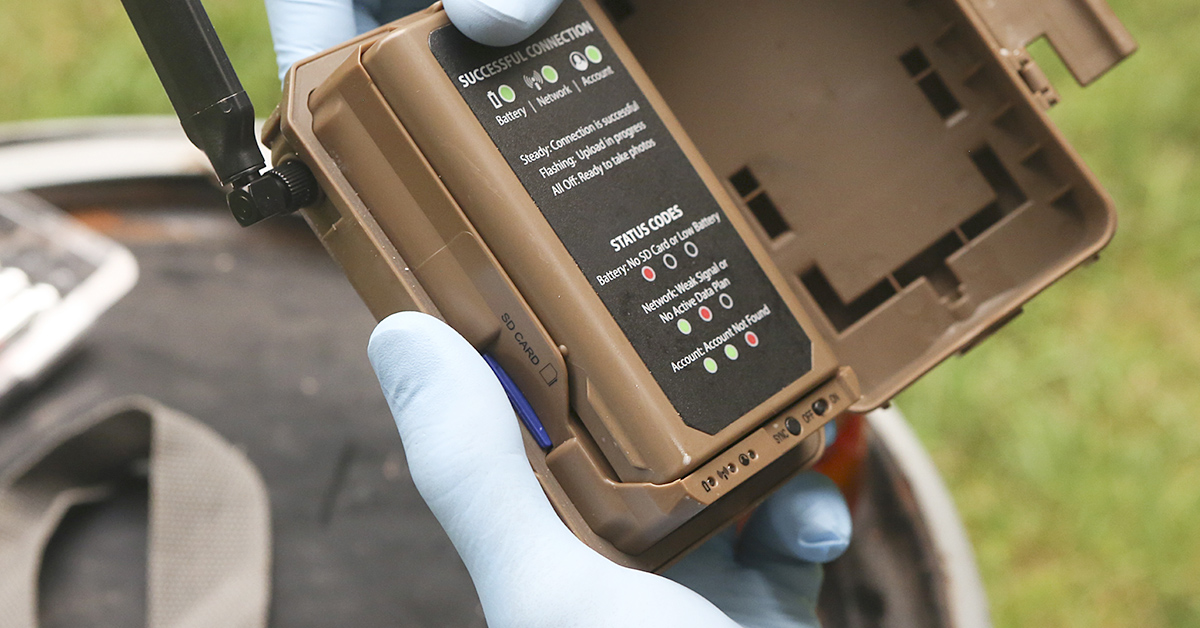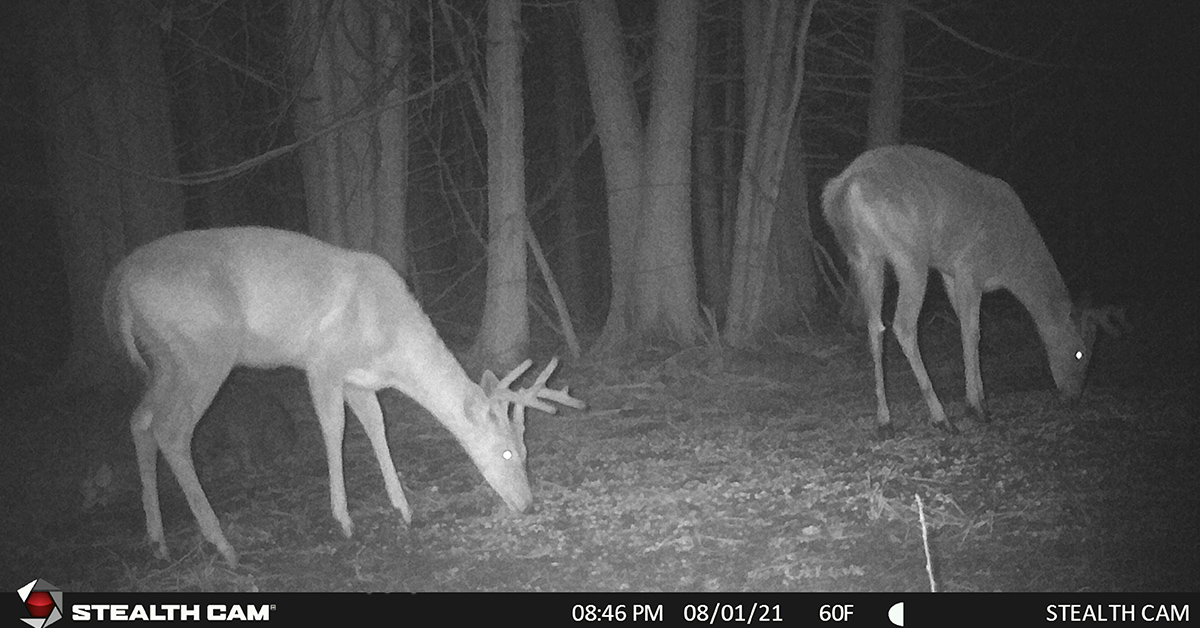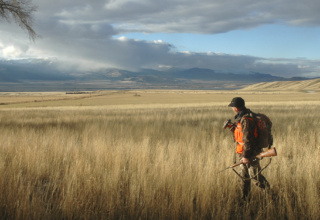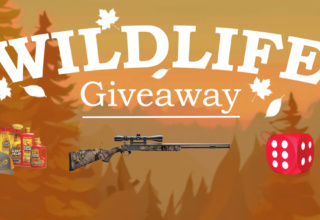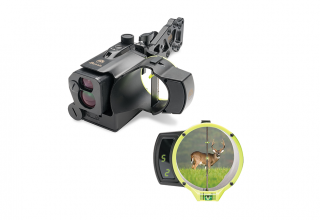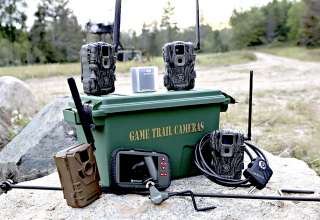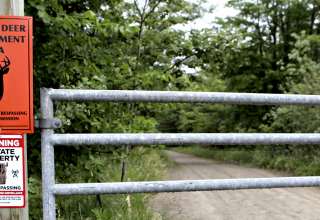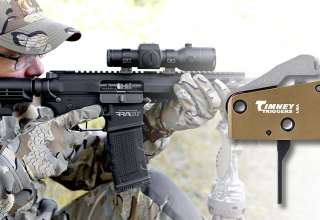Yes, it’s great to see big bucks when the hunt is on, but the real value of trail cams comes right now
by Toby Shaw; photography by Therese Shaw
We all get a rise capturing big bucks on our trail cameras. During the late summer and leading up to the rut, many of us are plowing through our pics and videos—sometimes on an hourly basis, if we have deployed wireless cameras in the field—seeking that potential adrenaline rush.
While identifying and patterning target bucks is almost always the end game of trail camera deployment, these incredible tools can also help you manage the wildlife on your property by providing valuable insight into what’s going on during times other than hunting season.
In one mid-Atlantic state we hunt, we’ve marked a noticeable downturn in whitetail numbers over the last several years. During that same period, there has been a notable increase in predator activity—evidenced not only by increased on-the-ground sightings while hunting, but also on the cameras we have set out in the area.
For example, black bear numbers have jumped considerably in the last few years—to the point that we’re as likely to see a bear on camera as a deer in certain locations. Ditto for coyotes.
Pegging the cause of deer mortality, absent an obvious disease outbreak or a detailed study by certified wildlife biologists, can be mostly guesswork. The preponderance of anecdotal and admittedly somewhat speculative evidence, though, can often lead us to the same conclusions that radio tracking and forensic analysis can provide when it comes to answering the question: “What’s killing the deer here?”
Coyotes get a lot of blame any time deer numbers take an observable dive—especially in the coyote pioneering states east of the Mississippi. But those raggedy canines aren’t the only species that hit whitetail fawns. In the first nine to twelve weeks of life, whitetail fawns are susceptible to predation not only from coyotes, but also from black bears and bobcats. In the area where we’ve experienced an alarming decline in deer numbers, we’ve seen a simultaneous rise in the number of black bears, coyotes, and even bobcats. As a friend and former conservation officer recently explained, “Bobcats are secretive creatures. If you start seeing them, then there are a whole lot more that you aren’t seeing.”
Coincidence? Maybe. But if we were forced to lay bets, our money is on increased depredation due to more predators in the area.
Sure, trail cams can tell us only part of the story and provide only suggestions as to what may be happening, yet they can point us in the right direction. And the truth is, predators can impact your hunting experience, and an increase in trail cam captures of predators near your focused hunting locations can tell you action may need to be taken. Maybe it’s time to make use of bear harvesting opportunities or to begin trapping predators even though fur prices aren’t worth the gasoline it takes to run a trap line. As for coyotes, bust ’em if you see ’em is our motto.
Another indicator of whitetail success and numbers in your hunting area is the quantity of fawns you capture on your cameras during the summer that are accompanied by mature does. Lots of does with few fawns—indicating a low doe-to-fawn ratio—may mean something is amiss. Ditto if you see that the buck-to-doe ratio is out of whack in your area. These are things that trail cameras can help you monitor and, therefore, hint at a possible course of action. That could be anything from hammering resident predators to adjusting your whitetail harvest.
For more info on how you can use trail cameras to better gauge your area whitetail population, check out this info bit from the University of Missouri Extension. You may also want to get the book Deer Cameras, the Science of Scouting from the National Deer Association.
Trail Camera Tips and Strategies
Tip #1 – Let the cameras do the work. To get a good sense of what’s happening in your whitetail woods, you need as many eyes on the ground as you can muster. Wireless cameras, such as these from Muddy and Stealth Cam, are best placed in areas where you want to maintain minimal disturbance—meaning, you don’t have to pull SD cards to see what’s going on. Let the images come to you.
Tip #2 – Maintain strict scent management discipline. Always wear scent-free rubber, latex, or vinyl gloves when handling your cameras and take the added precaution of spraying the gloves with a scent neutralizer.
Tip #3 – Use fresh batteries. Be sure your alkaline batteries (they tend to last longer than rechargeables, although they are more expensive in the long run) are fresh and of known quality. You want to minimize battery changes to prevent disturbing your observation area.
Tip #4 – Use empty SD cards. As with batteries, you don’t want to visit your camera any more than necessary, so maximum storage capacity is a must. We also recommend buying the highest capacity cards that are rated for your camera—especially if you want to capture video.
Tip #5 – Practice scent management in the field. Once again, wear scent-free gloves when handling your cameras, and further minimize your scent by wearing rubber boots that have been treated to a quality scent eliminating spray, such as Wildlife Research Center’s Scent Killer Gold.
Remember, you can get away with leaving scent on the ground and on the camera with young deer, but you definitely will spook big, mature deer. If they catch your scent, they will likely leave the area for a while…or for good.
- Trail Camera Hacks You Need to Know - September 2, 2021
- Trail Cams for Game Management - August 5, 2021
- Keep Your Eyes on Your Prize - July 10, 2021

